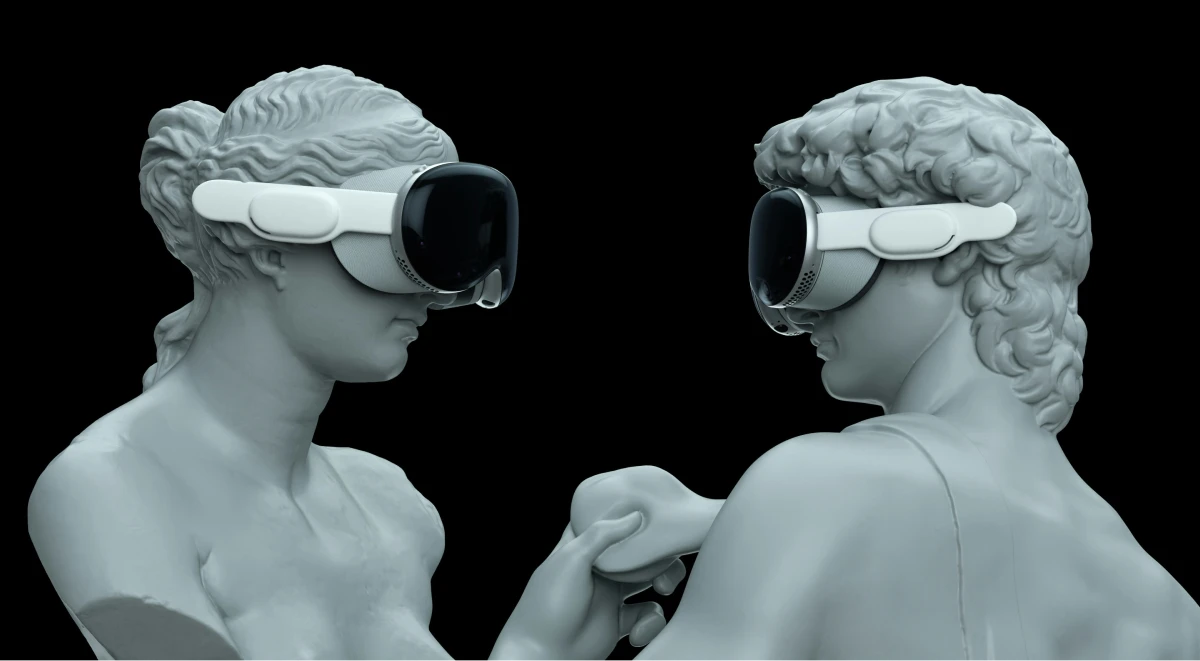

Prospective Design: What is it & How to Use it?
Why is it so challenging to create a vision for your product?
The future is always unclear, and so many factors can impact a product or service. As a design leader, I always struggled to deliver vision with my teams, especially with designers in delivery org. It's not that we didn't have any ideas for a vision. It was more than it was hard to articulate and get others onboarded.
However, prospective design can help you overcome this challenge. By looking ahead and anticipating future changes, you can develop a clear vision for your product.

The 4 reasons for preventing the creation of a design vision
I found four reasons for the difficulty of creating a product vision in current organizations.
The Lack of time
We are committed to delivering the existing roadmap and doing everything in our power to prevent any major disruptions or delays. This means that our team is working tirelessly every day, putting in long hours to make sure we can ship quality features and keep our existing customers happy. Our project managers, product owners, designers, developers, and researchers are all working hard to get the job done, but this focus on the here and now leaves little room for thinking strategically or planning ahead. We need to make sure that we continue to fight hard for short-term wins in order to ensure that our customers are satisfied with our products and services, while also working to develop a longer-term vision for our company that will help guide us into the future. With determination and commitment, I am confident that we can succeed in meeting both of these goals.
An unknown future
It's hard enough to predict the next quarter, let alone the next year or two. How can we be confident about a vision in such a changing environment?
Anyone who has ever tried to predict the future knows that it is difficult. The further into the future you want to look, the more uncertain your predictions become. This is especially true when it comes to technology. New breakthroughs can occur at any time, rendering previous estimates obsolete. Given this constant state of flux, how can we be confident about a vision for the future?
New technologies and changes in consumer behavior can quickly render even the most well-informed forecast obsolete.
The technical limitations
When you're working on a product vision, it's easy to get discouraged by all of the naysayers who tell you that it simply isn't feasible due to technical limitations. Whether they are voicing concerns about resource constraints or outdated software systems, this feedback can quickly break your confidence, no matter how optimistic and determined you may be. But if you want to succeed in creating a successful product vision, it's essential to push past these doubts and forge ahead with conviction.
By taking a strategic approach and prioritizing quality over time-saving shortcuts, you can build a product that people will truly value and support. And in the long run, that kind of success is well worth any initial resistance you might face. So don't give up at the first sign of doubt – keep pushing forward with optimism and determination, and your product vision will succeed!
Silos & organization.
Today, there is a growing trend in many companies of siloed product organizations, where different teams are responsible for different aspects of the product development cycle. While this can help increase efficiency and reduce coordination issues, it can also stifle innovation and limit the success of products in a rapidly changing market. Because every part of an organization is affected by changes to any other part, it can be challenging to develop a clear vision that incorporates all stakeholders.
At the heart of this challenge lies the need for greater collaboration between cross-functional teams. By breaking down traditional barriers and working together towards common goals, it becomes possible to create a holistic vision that considers all stakeholders' views and needs. This may require significant organizational change, but with strong leadership and shared commitment from all levels, it can ultimately lead to more successful products and higher overall performance for the company as a whole. So if we want to see more effective product development on a global scale, we must start by bringing greater clarity and cohesion to our product organizations.
Why a vision is important
When it comes to building new products and bringing them to market, having a clear vision of what you want to achieve is essential. This vision can inform all aspects of product development, from choosing the right software and hardware components to user interface design, to marketing strategies.
The answer lies in understanding that the future is not a static destination. It is an ever-evolving journey that we are constantly shaping with our actions. Our visions for the future should not be focused on predicting specific events or outcomes but on anticipating.
In an environment where change is the only constant, those who can embrace it will be the ones who succeed. A flexible business model that can quickly pivot in response to changes in the market is more likely to succeed than a rigid one. And a company that is willing to experiment and take risks is more likely to find the next big thing than one that plays it safe.

Exploring the future possibilities
I like the example of concept cars. Concept cars are designed to explore new ideas and technologies that may eventually find their way into production vehicles. But they are also meant to provoke a reaction and generate discussion about the future of automotive design. In other words, they are designed to be prospective.
The same can be said of prospective design more generally. It is a method of exploring future possibilities in order to generate new ideas and provoke discussion. It is not about predicting the future but about anticipating it.
There are many ways to use prospective design, but one of the most common is to create scenarios. Scenario planning involves developing several different possible future scenarios and then exploring how they might play out. This can help you to identify potential.
By understanding the trends and forces shaping the future, you can begin to anticipate the needs of your users and develop products that meet them.
The Prospective Design Framework
I work on the last year to build a framework for product teams to thrive long-term prospective goals in their delivery. It's a three-step process.

Step 1 - Defining what I call the Prospective principles
Let's keep the example of cars. It's not hard to imagine a future in which cars are autonomous, connected, and electric. But what will this future look like? What will the user experience be like? How will we interact with these new types of vehicles?
These are the kinds of questions that prospective design can help to answer. By identifying prospective principles like autonomous, connected, and electric, you can explore different scenarios and work on concrete hypotheses.
Prospective principles are fundamental values that underly every action, decision, or move the product team makes to reach a long-term goal.
For example, with the Prospective Principle of Autonomous: what if all cars were autonomous? What would the world look like then? How would it change the way we live and work?
With the prospective principle of Connected: what if all cars were connected? What would that mean for traffic congestion and safety? How would it impact the way we interact with our surroundings? And what if all cars were electric?
- Methods for this phase: 20 to 30 Interviews with stakeholders, 5 prospective workshops, 3 focus groups with users to refine the principles
- Deliverables: List of 5 to 10 Prospective principles
- Length: 3 months
- Actors: Strategic stakeholders (VP design, VP product, VP engineering, ...)
Step 2 - Creating the prospective backlog with prospective squads
Once your prospective principles are defined, you will then need to build what we call Prospective Squads.
A prospective squad is a 10-person cross-functional team in charge of exploring a unique prospective principle to generate short-term and medium-term actions to get closer to the vision.
Prospective squads then work in small groups to generate the prospective backlog. The prospective backlog is the product principles division into short and medium-term tasks.
- Methods for this phase: Prospective workshops
- Deliverables: A global prospective backlog
- Length: from 1 to 3months
- Actors: Tactical teams (Lead design, lead product, lead engineering,...)
Step 3 - Delivering the prospective assets.
A prospective asset is a feature, content, wording, or any element delivered live to get closer to a prospective principle.
During this phase, the prospective backlog is merged with the "regular" roadmap and delivery teams work on delivering day-to-day features such as prospective assets. Any global decision made in the project should be made to move towards the goal of a prospective principle. And, of course, every single prospective principle is still re-evaluated to get maximum flexibility.
- Methods for this phase: design, prototyping, user test, ...
- Deliverables: Prospective assets delivered
- Length: from 3 to 12 months
- Actors: Operational delivery teams (design, product, engineering,...)
To conclude
In today's fast-paced business environment, it is more important than ever for companies to clearly understand how their products or services are likely to be consumed in the future. Companies can stay ahead of the curve and avoid getting left behind by ever-changing trends.
The most challenging part is not defining a vision. It is to get closer to it every day while still being flexible enough to change course if necessary. This is where the Prospective Design Framework we built at Designshot comes in.
The Prospective design Framework is a tool that can help product teams disseminate their vision into the delivery operations to anticipate future trends and user needs and stay ahead of the competition. It is a process that involves defining prospective principles, creating a prospective backlog, and delivering prospective assets.
If you would like to know more, get in touch on Linkedin















